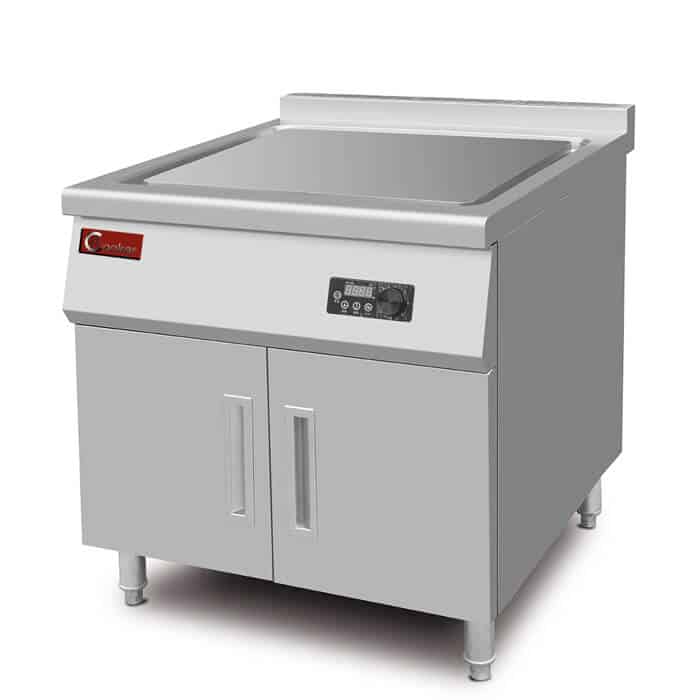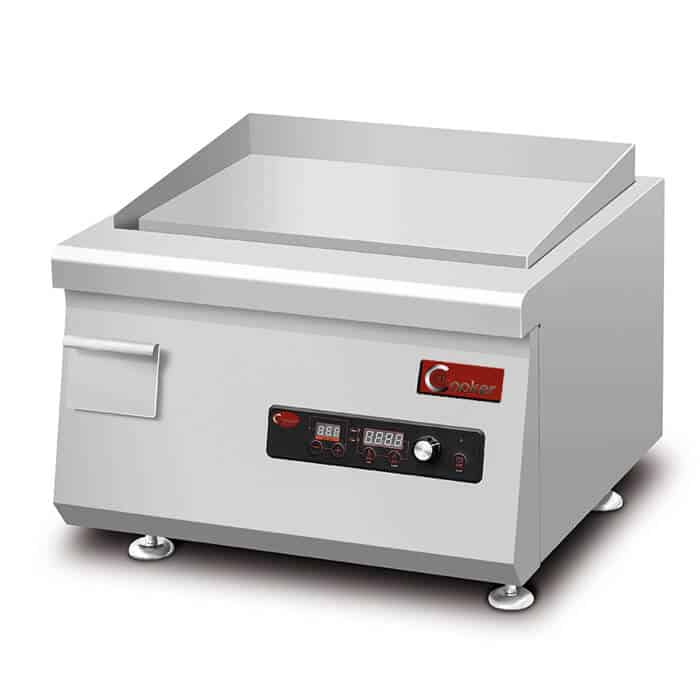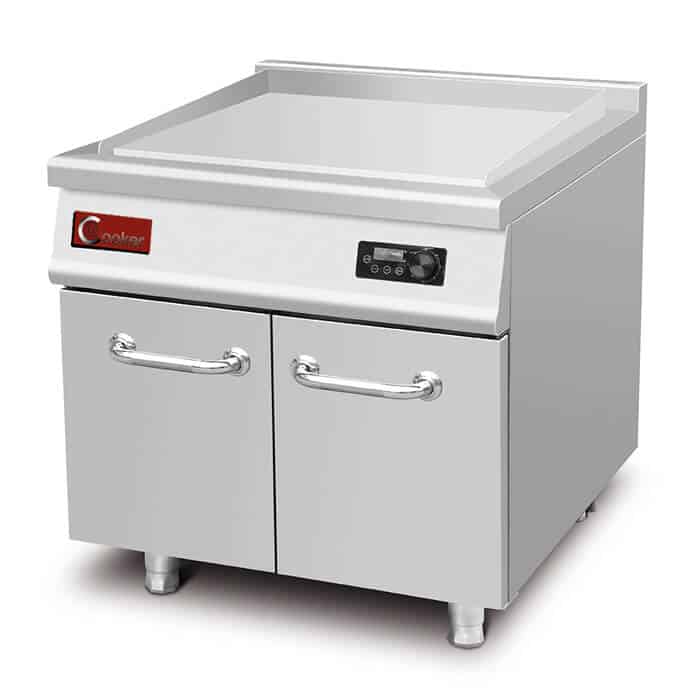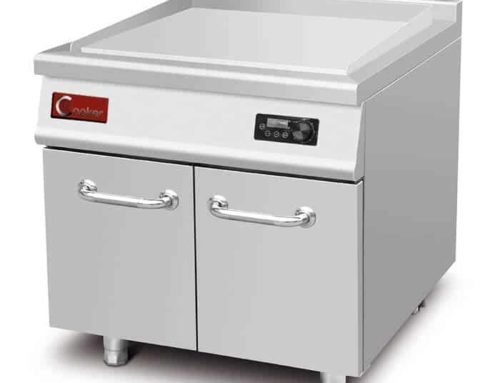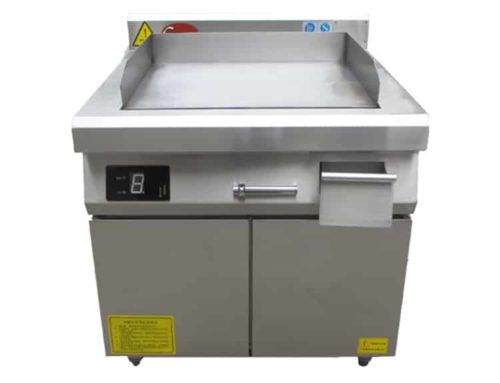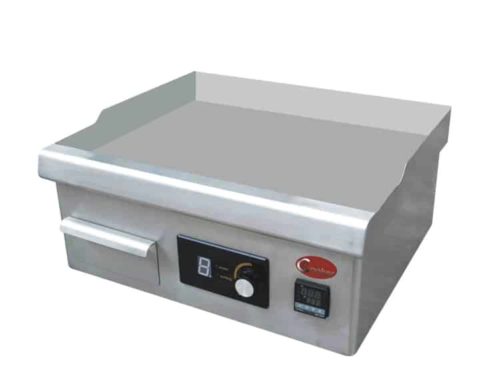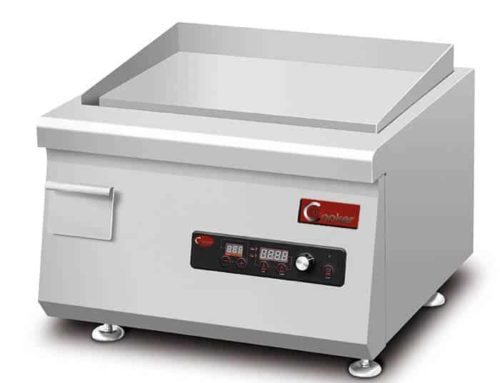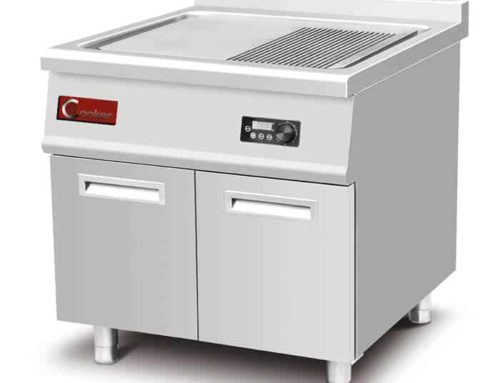What Are the Different Fuel Types Available for Commercial Griddles, and Which Is Most Efficient?
Commercial griddles—essential for breakfast stations, diners, and catering operations—come in three primary fuel types: gas, electric, and induction. Each type has unique strengths in heat speed, cost, and safety, but efficiency (how much fuel converts to usable cooking heat) varies dramatically. AT Cooker, a leading manufacturer of induction commercial griddles, designs equipment to maximize efficiency while meeting commercial kitchen demands. Below, we break down each fuel type’s features, compare their efficiency, and explain why induction stands out as the most efficient choice for modern commercial kitchens.
1. Commercial Griddles Are Available in Gas, Electric, and Induction Fuel Types
Every commercial griddle relies on one of three fuel sources to generate heat, each with distinct technology and use cases:
- Gas griddles: Use natural gas or propane to ignite a flame beneath a metal cooking surface (usually cast iron or steel).
- Electric griddles: Heat a metal element (coil or ribbon) that transfers heat to the cooking surface.
- Induction griddles: Use electromagnetic energy to heat ferrous cookware directly (no intermediate heating element), with the griddle surface acting as a stable base.
AT Cooker specializes in induction griddles (3.5KW to 5KW models) because they address key pain points of gas and electric units—like high energy waste and uneven heating. A breakfast café in Chicago switched from gas to AT Cooker’s 5KW induction griddle and reported: “We used to spend $300/month on propane—now we pay $150/month on electricity. The efficiency difference is night and day.”
2. Gas Griddles Use Natural Gas or Propane and Offer Quick Heat-Up Times
Gas griddles are a traditional choice for commercial kitchens, valued for their fast heat-up (reaching 350°F in 5–7 minutes) and familiar operation. They run on either natural gas (connected to a building’s gas line) or propane (portable for food trucks or outdoor events). The flame beneath the cooking surface provides direct heat, which many chefs prefer for searing foods like burgers or hash browns.
However, gas griddles have significant drawbacks:
- Low efficiency: Only 40–45% of gas energy converts to usable heat—most is lost to the air or surrounding surfaces.
- High operating costs: Natural gas prices ($1.50–$2.00/therm) and propane costs ($3.00–$4.00/gallon) lead to higher monthly expenses.
- Ventilation needs: Require powerful hoods ($1,000–$2,000) to remove smoke and carbon monoxide, adding installation costs.
A diner in Dallas using a gas griddle shared: “We love how fast it heats up, but our gas bill is $400/month. We’re considering switching to induction to cut costs—even if it takes a little longer to preheat.”
3. Electric Griddles Provide Consistent Temperature Control and Are Easier to Install
Electric griddles are popular for indoor kitchens due to their simple installation (only need a 240V outlet) and consistent heat distribution. They use either coil elements (budget models) or ribbon elements (premium models) to heat the surface, with digital controls for precise temperature settings (200°F–450°F).
Key advantages of electric griddles include:
- Clean operation: No flame or gas leaks, making them safer for enclosed spaces.
- Low maintenance: Fewer moving parts than gas griddles (no valves or burners to repair).
- Even heating: Ribbon elements distribute heat more uniformly than gas flames, reducing hot spots.
However, electric griddles are less efficient than induction—only 50–55% of energy converts to heat. A café in Seattle uses a 3KW electric griddle and said: “It’s easy to use, but our electricity bill is $250/month. We noticed the griddle surface stays hot even when not in use—wasting energy.”
4. Induction Griddles Use Electromagnetic Energy to Heat Cookware Directly, Improving Efficiency
Induction griddles (like AT Cooker’s 3.5KW and 5KW models) use electromagnetic induction to heat cookware with ferrous (iron-containing) bottoms—such as cast iron pans or stainless steel griddle plates. The griddle itself doesn’t get hot unless heated by the cookware, which eliminates heat loss to the air.
AT Cooker’s induction griddles feature German Infineon IGBT modules (a high-performance component) that boost efficiency to 90–95%. This means nearly all electrical energy is used to cook food, not heat the kitchen. A catering company in Austin uses our 3.5KW induction griddle for events: “We can run it off a generator without draining power—something we couldn’t do with our old electric griddle. It’s also cool to the touch, so staff don’t get burned.”
Unlike gas or electric griddles, induction models only consume energy when cookware is present. AT Cooker’s “pan detection” feature cuts power if no cookware is detected, saving an extra 5–10% on energy costs. A hotel kitchen reported this feature saved them $30/month in idle energy use.
5. Induction Griddles Have the Highest Energy Efficiency Among the Three Types
Efficiency is measured by how much fuel converts to usable cooking heat—and induction griddles outperform gas and electric by a wide margin. The table below compares efficiency and operating costs for a commercial griddle used 8 hours daily:
| Fuel Type | Energy Efficiency | Fuel Cost (Per Unit) | Daily Energy Use | Daily Cost | Monthly Cost (30 Days) |
|---|---|---|---|---|---|
| AT Cooker Induction (5KW) | 90–95% | $0.15/kWh (electricity) | 42.5 kWh (5KW × 8h × 0.95 efficiency) | $6.38 | $191.40 |
| Electric Griddle (5KW) | 50–55% | $0.15/kWh (electricity) | 72.7 kWh (5KW × 8h ÷ 0.55 efficiency) | $10.91 | $327.30 |
| Gas Griddle (17,000 BTU) | 40–45% | $1.75/therm (natural gas) | 3.11 therms (17,000 BTU × 8h ÷ 0.45 efficiency ÷ 100,000 BTU/therm) | $5.44 | $163.20* |
*Gas cost excludes $100–$150/month for vent hood operation and $50/year for gas line maintenance—costs induction/electric griddles avoid.
While gas has a lower daily cost on paper, hidden expenses (ventilation, maintenance) make it more expensive than induction over time. AT Cooker’s customers report saving $1,000–$1,500 annually by switching to induction.
Induction Griddle (AT Cooker)
Energy efficiency
Electric Griddle
Energy efficiency
Gas Griddle
Energy efficiency
6. Gas Griddles May Have Higher Operating Costs Due to Fuel Consumption
Gas griddles’ low efficiency means they require more fuel to produce the same heat as induction or electric models. For example, a gas griddle needs 17,000 BTU to match the cooking power of a 5KW induction griddle—using 3.11 therms daily (vs. 42.5 kWh for induction). Even with lower gas prices, this adds up:
- Natural gas price hike (30%): Increases monthly cost from $163 to $212.
- Propane for food trucks: $3.50/gallon × 10 gallons/week = $140/month (2x induction’s cost).
- Vent hood electricity: 500W × 8h × $0.15/kWh = $0.60/day = $18/month (extra cost for gas).
— Mike, Food Truck Operator (Austin, TX)
7. Electric Griddles Are Often Preferred for Indoor Use Due to Cleaner Operation
Electric griddles are cleaner than gas (no flame, no gas leaks) but still less efficient than induction. They’re ideal for small kitchens (cafés, convenience stores) where space is limited and ventilation is poor. However, their slow heat recovery (taking 2–3 minutes to rebound after adding cold food) reduces productivity during peak hours.
AT Cooker’s induction griddles combine electric’s clean operation with faster performance: “We used an electric griddle for breakfast sandwiches, but it took 10 minutes to heat up and 3 minutes to recover between batches,” said a café owner in Denver. “The induction griddle heats up in 3 minutes and recovers in 30 seconds—we serve 20% more customers now.”
8. Induction Griddles Generate Less Ambient Heat, Improving Kitchen Comfort
Gas and electric griddles release 50–60% of their energy as ambient heat, making kitchens hot and increasing AC costs. Induction griddles generate 10–15% ambient heat (only from the cookware), keeping kitchens cooler. A restaurant in Miami reported a $100/month drop in AC bills after switching to induction: “The kitchen used to be 95°F during lunch rush—now it’s 85°F. Staff are happier, and we save on cooling.”
Ambient Heat Comparison (8 Hours of Use)
- Induction Griddle: Adds 5–8°F to kitchen temperature (minimal AC impact).
- Electric Griddle: Adds 12–15°F to kitchen temperature (AC runs 20% more).
- Gas Griddle: Adds 18–22°F to kitchen temperature (AC runs 40% more).
9. Maintenance Is Generally Simpler for Electric and Induction Griddles Compared to Gas
Gas griddles have more moving parts (valves, burners, ignition systems) that require regular maintenance:
- Monthly: Clean burners and ignition electrodes ($50–$100/year).
- Quarterly: Inspect gas lines for leaks ($100/year).
- Annually: Replace gas valves ($200–$300/year).
Electric griddles need coil replacements every 1–2 years ($100–$150), while induction griddles have no wearable parts—only requiring annual cleaning of the induction coil ($20 for cleaning kits). AT Cooker’s induction griddles come with a 2-year warranty, covering all components except the glass surface.
10. Induction Griddles Provide Precise Temperature Control, Reducing Food Waste
Induction griddles offer ±1°F temperature precision (vs. ±10°F for gas/electric), ensuring consistent cooking and less waste. AT Cooker’s 5KW induction griddle has 8 power levels (1–8) and real-time temperature display, making it easy to simmer sauces (200°F) or sear meats (450°F) without overcooking.
A diner in Chicago reduced food waste by 15% after switching to induction: “We used to burn 10% of our hash browns because the gas griddle had hot spots. With induction, every batch is perfect—we save $75/month on wasted food.”
11. Gas Griddles Require Proper Ventilation Systems for Safety
Gas griddles produce carbon monoxide, nitrogen oxides, and smoke—requiring a commercial vent hood (CFM rating of 100–200 per square foot of griddle surface). Installation costs $1,000–$2,000, and annual maintenance (filter replacements, fan service) adds $300–$500. Induction and electric griddles only need basic ventilation (no hood required in most regions), saving thousands upfront.
12. Electric Griddles Can Have Slower Heat Recovery Times Compared to Gas
Electric griddles take 2–3 minutes to recover temperature after adding cold food (vs. 1 minute for gas), slowing down service during peak hours. Induction griddles recover in 30–45 seconds—faster than both gas and electric—thanks to their direct heating technology. A breakfast chain in Las Vegas reported: “Our electric griddle couldn’t keep up with 7 AM rush—we had to wait 2 minutes between batches. Induction lets us cook nonstop.”
13. Induction Griddles Are Increasingly Popular for Their Energy Savings and Safety Features
Induction griddles are the fastest-growing segment in commercial cooking equipment, driven by:
- Energy savings: 40–50% lower operating costs than gas/electric.
- Safety: Cool-to-touch surface (no burns) and no gas leaks.
- Speed: Faster heat-up and recovery than electric.
- Sustainability: Lower carbon footprint (90% efficiency vs. 45% for gas).
AT Cooker’s induction griddles—available in countertop (3.5KW) and built-in (5KW) models—are designed for commercial use, with 304# stainless steel bodies and German IGBT modules for durability. Whether you’re a small café or a large hotel, induction offers the best balance of efficiency, cost, and performance.
Get a Custom Efficiency Analysis for Your Commercial Griddle
Tell us your daily cooking volume, and we’ll calculate how much you can save with an induction griddle.
